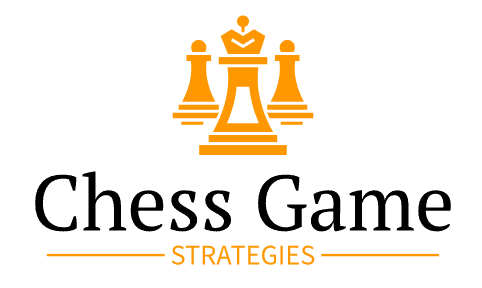
Chess Glossary : Section S
Sac
Short for Sacrifice. Speaking of which …
Sacrifice
To freely allow the capture of any of your Chess pieces in order to achieve or maintain the advantage during a game – be it to economize your playing time; to gain a better position; or for the sake of an improved Pawn Structure.
Sans Voir
Sans is a French verb, meaning “Without”. Voir, another French verb, which translates as “to see”. In other words, it means an “inability to see” and, for our purposes, it refers to Blindfold Chess, where players must make there moves, but they’re not allowed to see the board. This type of game helps to train the brain to visualize the moves and resulting positions during a game of chess.
Salient
When you have three Pawns on adjacent files, on the same Rank, and then the middle Pawn steps forward, to form a sort of arrowhead shape in the direction they’re traveling, the three Pawns are said to be in a Salient formation.
Scholar’s Mate
A famous Checkmating sequence and that’s because it’s a very fast Mating sequence, achieving Checkmate in 4 just Moves!
Score
Usually written-up in Algebraic Notation, the Score is a record of all actions (moves, captures, etc.) that took place in a game of chess.
Score Sheet
A piece of paper that the players write on to record their score. Under tournament/competition conditions, both players will usually have a Score Sheet to record the moves, which they typically sign once the game has ended.
Sealed Move
When over-the-board games last exceptionally long, they can be adjourned, to be continued at another time. In order to stop players “revising” what to do, it can be agreed that the next player to move will write down their intended move, in secret, which will then be placed into a Sealed envelope – hence the term Sealed Move. When the game resumes, the arbiter usually makes the Sealed Move and the game continues.
Second
Someone who is hired by a player, usually to assist in preparing for and during a major tournament or match, is known as the Second.
See-saw
Another name for a Windmill Attack.
Semi-Open Game
Also known as a Half-Open Game or Asymmetrical King Pawn Opening, it’s an Opening sequence that begins with White playing 1. e4, and Black’s response is any other legal move, except 1. … e5.
Semi-Closed Game
Also known as a Half-Closed Gameor Asymmetrical Queen Pawn Opening, it’s an Opening sequence that begins with White playing 1. d4, and Black’s response is any other legal move, except 1. … d5.
Sham Sacrifice
Also known as a “Pseudo sacrifice”, it’s when a player offers a Pawn or Piece, as a sacrifice, but there’s no risk in making the sacrifice, as the player stands to make an equal or greater gain in material or will succeed in Checkmating their opponent, should they accept the sacrificial offering.
Simultaneous Exhibition
Also referred to as a ‘Simul’ or ‘Chess Simul’ – it’s Chess played by one player against multiple others, at the same time … and requiring the strongest coffee the organizers can grind.
Simplify
1. The Chess Glossary Team had a sudden, collective brain wave that included the spiffing idea of simplifying their work – chiefly by doing no work … To which management suggested they simplified things, by doing no payroll … All of which contributed to the following entry:
2. Chess … Simplify … Trading Pieces, to clear most or all of the ‘heavy hitters’ off the Board, until you’re down to the Kings, Pawns; perhaps one or two Pieces maximum – there’s less threats on the Board; the game has become “Simplified“.
Skewer
Imagine there are two enemy pieces at either end of a line of squares on the board – could be either on the straights or the diagonals … The tactical threat known as a Skewer arises when you’re able to place one of your long-distance pieces inbetween, such as a Bishop, Rook, or Queen, which is also safe from capture. Your enemy will then have to decide which piece to rescue and which piece to forgo to inevitable capture.
Skittles
Also referred to as a “Friendly Game”, or a “Casual Game” and is one that is not played as part of a tournament, exhibition, or match. Quite often, these games won’t be timed.
Small Center
Also known as the “Center”, it’s the region of the chessboard consisting of the squares e4, d4, e5 and d5.
Smothered Checkmate
When the King is totally blocked in by pieces of its own color, it’s said to be Smothered … If that King is subsequently put in Check, with no legal move to escape, it’s a “Smothered Checkmate“.
Solid
A move that carries little risk and has the characteristics of a Quiet Move, instead of being more tactically aggressive, is referred to as a Solid move.
Sound
Any correct maneuver is referred to as being Sound. E.g. An Opening that hasn’t been refuted is a Sound Opening; a Sacrifice that provides sufficient compensation is a Sound sacrifice; etc.
Space
1. Face it, if there’s really life up there … after over 4 Billion Years already … Odds-on, THEY’RE NOT COMING.
2. The area – or territory – on the Chess Board, controlled by each player.
Space Count
1. One billion stars … Two billion stars … THREE billion stars, ah, ah, ah … This Chess Glossary Team entry – and Sesame Street rip-off – was brought to you by the numbers 1.2.3. and by the letters I.D.L.E.
2. According to Yasser Seirawan’s ‘Winning Chess Tactics book, Space Count refers to: “A numerical system used to determine who controls more space, in which 1 point is allocated to each square …” – take a deep breath – “… on one player’s side of the board that is controlled by a piece or pawn belonging to the other player“.
Spanish Bishop
The King Bishop (the one that starts each game of chess on the Kingside), when moved to the ‘b5’ square, is known as a Spanish Bishop. It’s typically seen during White’s 3rd move, in the Chess Opening, known as the Ruy Lopez 1. e4 e5, 2. Nf3 Nc6, 3. Bb5. As such, this Opening sequence is also known as the “Spanish Opening”, or the “Spanish Game”.
Speculative
1. Any member of the Chess Glossary Team getting a better job when this lousy gig’s over.
2. If you understood the principle involving the entry about Calculation of Variations, then you’ll understand that a Speculative move or action is one that relies more on intuition – you have a “gut feeling“, cross your knickers and give it a go.
Spite Check
When a player is about to be Checkmated and they make a move that temporarily puts their opponent’s King in Check, it’s known as a Spite Check, because it’s made out of “spite”, just to delay the player’s inevitable Loss.
Squeeze
1. Never let the fat lady give you a hug.
2. Sometimes another name for a non-mutual Zugzwang.
3. When in a bind and the pressure is gradually increased, the player whose army is facing more and more restrictions on the board is being gradually Squeezed to death.
St. Andrew’s Cross
1. We bet he is … No TV, No Internet = No Nitro Circus!
2. Attack in chess formed by TWO diagonal Pins – with the two, crossing lines of attack taking the name from the appearance of the two diagonal white lines seen on the Scot’s Flag.
Stalemate
1. A game that ends in a Draw
2. That suspicious-looking kebab in the Chess Glossary Team’s fridge. As in, “You know that kebab in the fridge? I think by now it’s …”
Staunton Chessmen
A style of chess pieces that is the standard used for all Chess Tournaments and Competitions. In other words, if you go to compete in a Chess Tournament, the pieces you’ll use are all Staunton Chessmen.
Stem Game
A particular game of chess that features the first use of a specific Opening Variation.
Strategies
Like having a battle plan for a war, Chess Strategies are used to secure a variety of advantages, throughout your game … Rather than moving any old piece, to any old square, employing effective Strategies will give you a greater degree of control over your army and how you intend to handle the enemy.
Strong Outpost Station
A Strong Outpost Station is one where a Knight is defended by a Pawn, which cannot be dislodged without disadvantage to the attacker, or which is ahead of a Pawn which it is blocking from advancing, and is not easily forced away by a Pawn on an adjacent square.
Study
1. An alien concept to all of the Chess Glossary Team … They do try, it’s just that laziness offered a better lifestyle promise.
2. Like the popular, textbook Chess Openings, a Study refers to possible situations that could arise and the practice of these theoretical positions can help to improve your understanding of different tactics, strategies and concepts of this fantastically intruiging game called Chess.
Style
Refers to a person’s playing style … They could be more aggressive in their approach and like to attack as soon as possible; or they may be more of a patient personality, preferring to slowly develop their pieces and control the game at a more leisurely pace.
Sudden Death
1. To quote Ren and Stimpy: “Don’t whiz on the electric fence”.
2. A specific type of Time Control where each player gets a set amount of time in which to complete all their moves. The game finishes when they run out of time.
Superior Development
Superior Development involves comparing the number of pieces of each color off the back row, plus any developing moves on … the first rank itself (castling; a rook move to a central file).
Support Point
A square that’s already protected by one or more of your own troops, providing back-up – or “Support” – to another piece.
Swindle
1. It’s what the Chess Glossary Team do best.
2. A Swindle is a term that helps to distinguish itself from Traps and Pitfalls. Proposed by IM Israel Albert Horowitz and leading Chess author, Fred Reinfeld. They state: “A ‘Swindle’ is a Pitfall adopted by a player who has a clearly lost game” … Basically, a Swindle is a perceived poor move, which actually rescues a player from near-certain doom.
Swiss Tournament
1. Smells of cheese, but the competition runs like clockwork.
2. Refers to a Chess Tournament that determines who plays who, using the “Swiss system” for pairing players based on roughly equal ability (as determined by their score).
Symmetry
When both players make identical moves, the positions on the Board are totally mirrored – the pattern is “Symmetrical“.

